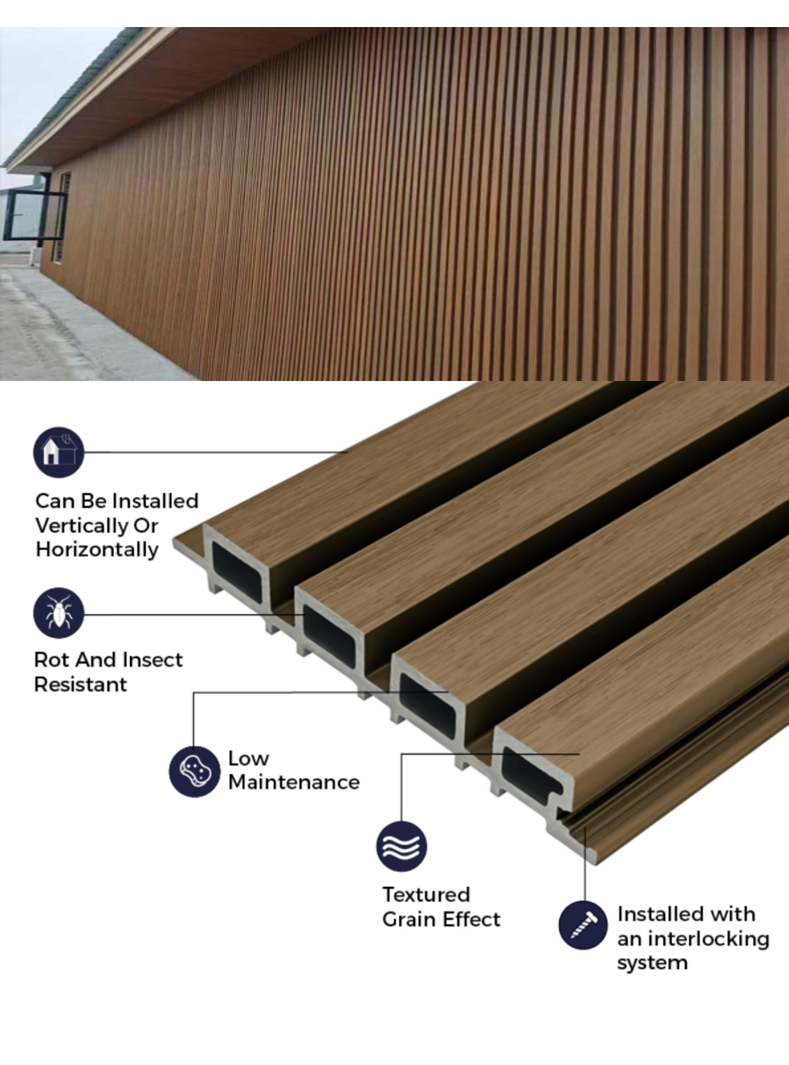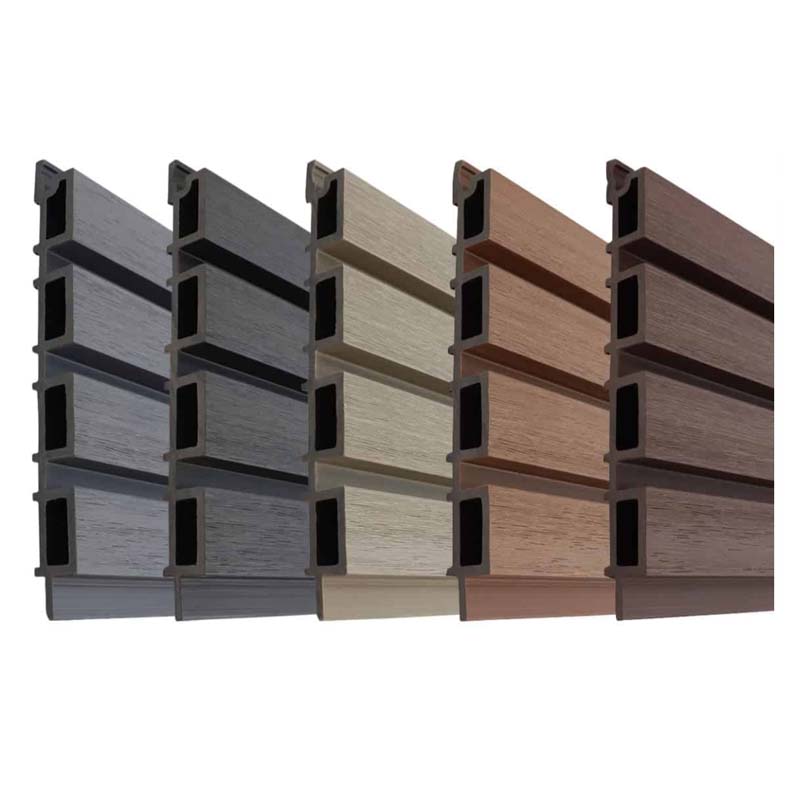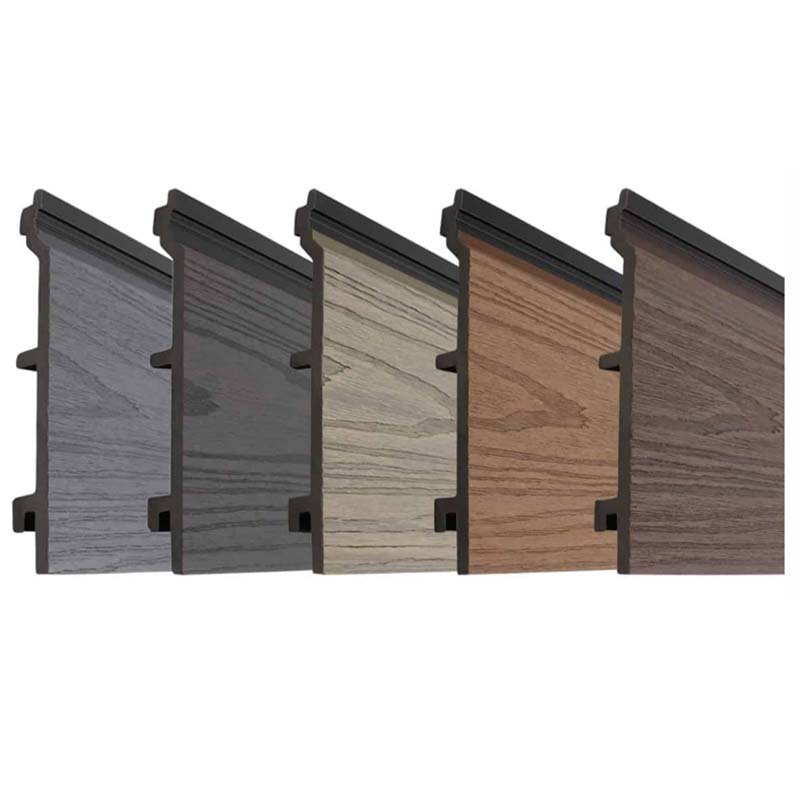Composite Cladding:Discover the Benefits of Low-Maintenance
Composite cladding is a type of exterior wall covering that is becoming increasingly popular in the construction industry. It is made up of a combination of materials, typically an outer layer, an inner core, and an adhesive. The outer layer is usually a durable and weather-resistant material, such as HDPE, PVC, or fiber cement, while the inner core is often made of a lightweight material such as foam or honeycomb.
Upgrade Your Home's Exterior With Composite Cladding
If your home's siding has seen better days, it may be time for an exterior facelift. Rather than repainting or restaining, consider composite cladding to refresh the look of your house while enjoying lasting performance. Composite cladding offers homeowners a durable, stylish and low-maintenance alternative to traditional wood siding options.
Composite cladding comprises a blend of wood fibers or particles and recycled plastic. This combination creates a product that resists moisture, decay, insects, splitting and rotting more effectively than unmodified wood. Quality products retain color vibrancy for years without fading. The color and texture options ranging from traditional wood looks to sleek modern finishes.
Long Lasting Curb Appeal
Life happens, and houses take hits. Over time, siding endures sun exposure, temperature fluctuations, humidity, hail storms and more. Such elements break down the integrity of real wood, showing as cracks, peels, splinters and discoloration. Owners then face repetitive repainting and staining to uphold aesthetics. Composite resists swelling and damage far better to maintain home beauty and value over decades.
Low Maintenance & Easy Care
Composite cladding also saves homeowners substantial time on preservation and repairs. While real wood products require restaining or resealing every 2-4 years, quality composite cladding retains its just-installed look for 20+ years without maintenance. A simple occasional rinse keeps composite clean between professional exterior washings. No painting, no scraping away old finish, and no climbing ladders for risky DIY touch ups needed.
Added Strength & Hail Resistance
Along with standing up to sun and moisture exposure, composite materials also endure impact damage better than alternatives like vinyl and cedar. Vinyl can dent, warp and discolor when hit by flying debris in high winds and severe weather. Some composite cladding products even come backed by a limited hail damage warranty for additional consumer protection and peace of mind.
Invest In Long-Term Quality
Homeowners save significantly over time on repairs, refinishing and replacement costs by installing quality composite materials on home exteriors versus lower cost wood finishes. Though more expensive upfront than vinyl, wood or fiber cement, lifetime cost analyses confirm that low maintenance composites make up for the initial investment in less than a decade of ownership. Added defenses against impact, fire, pests and climate fluctuations bring added value as well.
Transform your home’s exterior and safeguard your investment against the elements with quality composite cladding. Contact reputable local suppliers to explore the durable, vibrant and hassle-free options available to enhance and protect your property for lasting enjoyment and marketability.
Aesthetic Elegance:
Composite cladding is designed to mimic the appearance of natural wood, providing a warm and inviting aesthetic for any exterior. Whether used in residential or commercial projects, it adds a touch of timeless elegance that complements various architectural styles.
Durability Beyond Compare:
Unlike traditional wood cladding, composite alternatives boast superior durability. The combination of recycled wood fibers and high-quality polymers creates a material resistant to rot, decay, and insect damage. This durability ensures a long-lasting and low-maintenance exterior, reducing the need for constant upkeep and replacement.
Weather Resistance:
Composite cladding stands resilient against the harshest weather conditions. It is engineered to withstand extreme temperatures, heavy rain, and UV exposure without fading, warping, or deteriorating. This weather resistance ensures that the exterior of your building remains pristine and vibrant for years to come.
Sustainability in Focus:
One of the key advantages of composite cladding is its eco-friendly composition. By incorporating recycled materials, it minimizes the environmental impact associated with traditional building materials. This sustainable approach makes it a responsible choice for those who prioritize green building practices and desire to reduce their carbon footprint.
Versatility in Design:
With composite cladding, architects and designers have the freedom to explore creative and innovative designs. The material is available in various colors, textures, and finishes, allowing for customization to suit specific aesthetic preferences. This versatility ensures that composite cladding can seamlessly integrate into diverse architectural visions.
Easy Installation Process:
Composite cladding systems often feature straightforward installation processes. Interlocking panels or concealed fastening systems make it easier for contractors and DIY enthusiasts alike to achieve a professional and polished finish. The ease of installation translates to time and cost savings during construction.
Improved Insulation:
Some composite cladding products come with enhanced insulation properties, contributing to improved energy efficiency in buildings. This additional benefit can lead to reduced heating and cooling costs over time, making it a practical choice for those looking to enhance the energy performance of their structures.
Fire Resistance:
Many composite cladding products are engineered to be fire-resistant, providing an extra layer of safety for buildings. This feature is especially crucial in areas prone to wildfires or for those seeking additional protection against potential fire hazards.
Composite Cladding Range
Where to use?

- Exterior walls: Composite cladding is often used as an alternative to traditional siding or brick on the exterior walls of buildings. It provides a durable and low-maintenance solution that can be customized to suit a range of design styles.
- Roofing: Composite cladding can also be used on roofs as a roofing material. It provides excellent insulation and is resistant to weathering, making it a good choice for areas that experience extreme weather conditions.
- Balconies and terraces: Composite cladding can be used to cover balconies and terraces, creating a stylish and durable outdoor space. It is resistant to fading, cracking, and warping, making it ideal for use in areas that are exposed to the elements.
- Fences and gates: Composite cladding can be used to create attractive and low-maintenance fences and gates. It is resistant to damage from moisture, insects, and sunlight, making it a long-lasting option for outdoor applications.
- Interior walls: Composite cladding can also be used on interior walls, providing a stylish and durable solution that is easy to clean and maintain.
Composite cladding can be used in a variety of applications, both residential and commercial. Here are some of the most common places where composite cladding is used:
Features & Benefits

- Exterior walls: Composite cladding is often used as an alternative to traditional siding or brick on the exterior walls of buildings. It provides a durable and low-maintenance solution that can be customized to suit a range of design styles.
- Roofing: Composite cladding can also be used on roofs as a roofing material. It provides excellent insulation and is resistant to weathering, making it a good choice for areas that experience extreme weather conditions.
- Balconies and terraces: Composite cladding can be used to cover balconies and terraces, creating a stylish and durable outdoor space. It is resistant to fading, cracking, and warping, making it ideal for use in areas that are exposed to the elements.
- Fences and gates: Composite cladding can be used to create attractive and low-maintenance fences and gates. It is resistant to damage from moisture, insects, and sunlight, making it a long-lasting option for outdoor applications.
- Interior walls: Composite cladding can also be used on interior walls, providing a stylish and durable solution that is easy to clean and maintain.
Know More
In summary, composite cladding can be used in a wide range of applications, both inside and outside of buildings. Its durability, low-maintenance upkeep, and energy efficiency make it a popular choice for a variety of construction projects.
Need Further Support or Advice?
If you have questions or require further support, our team of approachable experts just a phone call away. Don't hesitate to reach out to us, and we'll gladly assist you in any way we can.


